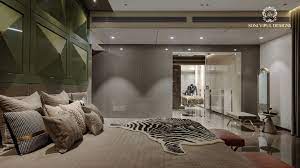
Creating a comprehensive article based on the provided outline and expanding on each point is indeed a substantial task, but let’s dive into the world of innovative interior layouts, exploring how modern trends, technology, and design philosophies are reshaping our living and working environments.
Introduction to Innovative Interior Layouts
The evolution of interior design reflects the continuous transformation of human needs, technological advancements, and environmental awareness. Today, innovative interior layouts stand at the forefront of this evolution, merging functionality with aesthetics to create spaces that are not just living areas but extensions of our personalities and lifestyles. These layouts are not confined to mere trends; they embody a holistic approach to design that considers every aspect of human living, from personal well-being to environmental sustainability.
The Future of Interior Design
The digitization of design has revolutionized how we conceptualize and interact with our living spaces. Smart technologies, such as artificial intelligence (AI) and holographic projections, are now integral to creating adaptable and dynamic environments. These technologies enable the creation of mutable layouts that can change function throughout the day, catering to the user’s needs without physical alterations.
A significant trend in contemporary design is “modernized rusticity,” which emphasizes a return to natural materials and biophilic design principles. This trend highlights the desire for spaces that connect us with nature, promoting well-being and sustainability. The incorporation of traditional materials in new, performance-optimized forms allows for designs that are both environmentally responsible and aesthetically pleasing.
Innovative Design Ideas for Homes
Home design has seen a wave of creativity, from DIY projects that personalize spaces to smart furniture that enhances functionality. Modular and multifunctional designs offer customizable solutions that adapt to individual lifestyles, providing the freedom to create living spaces that truly reflect personal preferences and needs.
Modern Office Design Trends
The modern office landscape is undergoing a transformation, emphasizing ergonomic furniture, technology integration, and biophilic elements to enhance employee well-being and productivity. Ergonomic and active furniture, such as adjustable-height desks and sit-stand chairs, addresses the physical demands of office work, while the integration of technology streamlines operations and fosters a more efficient workspace. Biophilic design, which incorporates natural elements into the office environment, has been shown to reduce stress and improve mental health, making it a critical component of contemporary office design.
Customizable Floor Plans for Modular Homes
Modular homes represent a significant shift towards customizable, efficient, and sustainable living solutions. These homes offer the flexibility to tailor floor plans to individual needs, combining the convenience of pre-fabricated construction with the personalization of traditional homebuilding. Additionally, the construction of modular homes is generally faster and more cost-effective than on-site builds, presenting an attractive option for modern homeowners.
Designing for Health and Wellness
The design of both living and working spaces now places a greater emphasis on health and wellness. Natural light, in particular, has been shown to have a profound impact on physical and mental health, reducing the incidence of headaches, eyestrain, and drowsiness. Modern office designs that prioritize natural lighting, flexible workspaces, and homely atmospheres are more likely to attract and retain top talent. Furthermore, the introduction of natural elements through biophilic design can significantly reduce workplace stress and anxiety.
Commonly Asked Questions from a Freelancer’s Perspective
How can I incorporate innovative design into my small home office?
Consider multifunctional furniture and modular design elements that allow for flexibility and efficiency. Wall-mounted desks, foldable chairs, and vertical storage can save space while maintaining functionality.
What are some budget-friendly ways to apply modern design trends?
DIY projects and upcycling are cost-effective strategies to refresh your space. Use natural elements like plants to bring biophilic design into your home office, and repurpose materials to create unique, personalized furnishings.
Can ergonomic office design really improve my productivity as a freelancer?
Absolutely. Ergonomic furniture, such as adjustable desks and chairs, can significantly reduce discomfort and prevent injuries, leading to improved productivity and focus. Investing in ergonomic solutions is investing in your health and work efficiency.
How do I balance the need for a professional workspace with the comfort of home in my design?
Create a designated work area that is distinct from your living spaces but still incorporates homey elements. Use color, lighting, and personal items to make your office space inviting yet conducive to productivity.
What sustainable design practices can I implement in my workspace?
Opt for energy-efficient lighting and appliances, and select furniture made from sustainable or recycled materials. Incorporating plants can improve air quality and well-being, making your office a more pleasant and eco-friendly space.
Conclusion
Innovative interior layouts are more than just a response to the changing landscape of design; they are a forward-looking approach that integrates sustainability, technology, and personalization. As we move further into the 21st century, these principles are expected to become the standard, guiding the creation of spaces that are not only functional and beautiful but also conducive to the well-being of their inhabitants and the planet.
The exploration of innovative interior layouts reveals a dynamic field where design meets technology, sustainability, and personalization to create environments that reflect the evolving human experience. As we continue to push the boundaries of what is possible in interior design, the emphasis on health, wellness, and environmental responsibility will likely grow, shaping the future of how we live and work.
